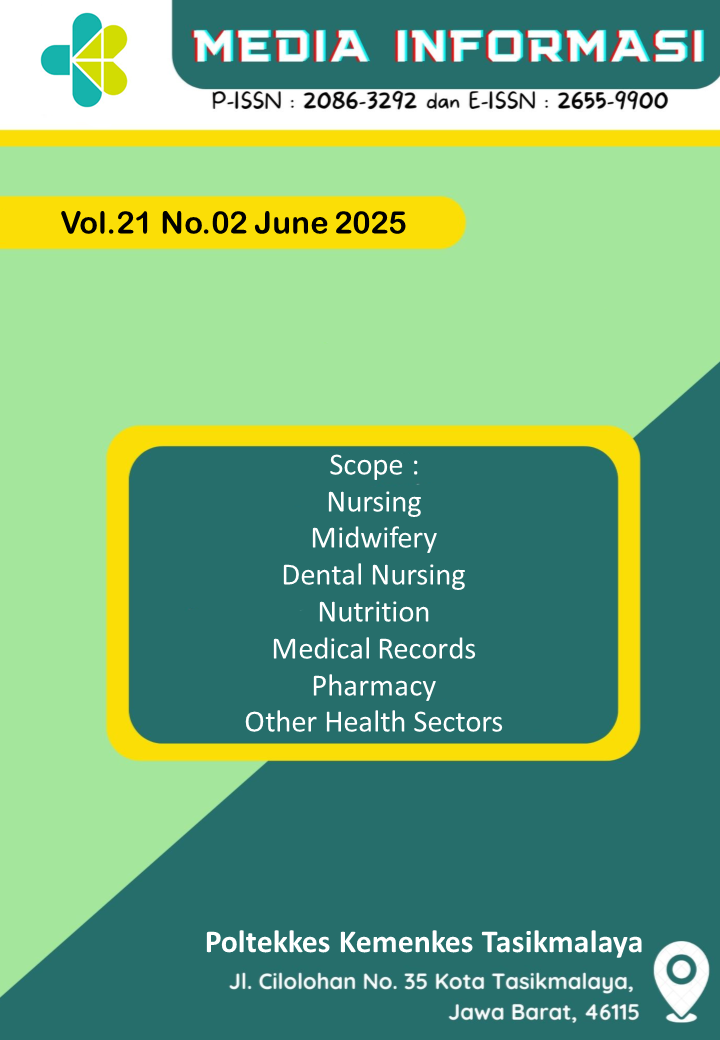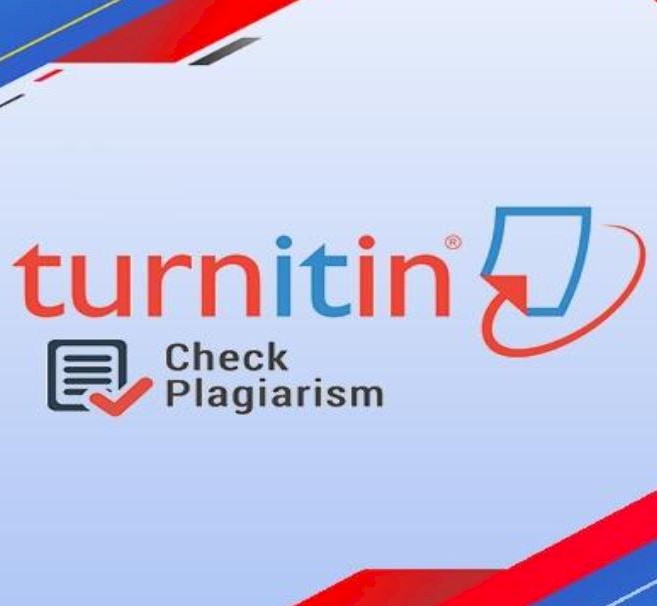NUTRITIONAL CONTENT OF ANALOG RICE FROM SAGO WITH MUNG BEAN PROTEIN AS A SUBSTITUTE FOR PADDY RICE
DOI:
https://doi.org/10.37160/mijournal.v21i02.855Keywords:
analog rice, sago, mung beanAbstract
Analog rice is one of the staple food alternatives developed to support national food diversification and reduce dependence on paddy rice. This study aims to analyze the nutritional content of sago-based analog rice and compare it with the nutritional content of white rice (Oryza sativa) in an equivalent portion of 200 grams. Laboratory analysis showed that sago analog rice contains 756 kcal of energy, 174.8 g of carbohydrates, 2.88 g of protein, 5.16 g of fat, and 1.64 g of ash. Meanwhile, in the same quantity, white rice contains approximately 720 kcal of energy, around 156 g of carbohydrates, approximately 13.6 g of protein, and about 1.2 g of fat. The conclusion of this study is that sago analog rice has higher energy and carbohydrate content but significantly lower protein content compared to white rice. Therefore, although sago analog rice has potential as an energy source and utilization of local food resources, reformulation with protein-rich ingredients is necessary to improve its nutritional value. This study supports the development of sago-based analog rice as a strategic food alternative in sago-producing regions, provided that further nutritional enrichment is conducted to make it acceptable as a nutritionally equivalent staple food.
Downloads
References
Diniyah, N., Puspitasari, A., Nafi, A., & Subagio, A. (2017). Characteristic of analog rice using hot extruder twin screw. Jurnal Penelitian Pascapanen Pertanian, 13(1), 36. https://doi.org/10.21082/jpasca.v13n1.2016.36-42
Flores‐Silva, P., Rodríguez‐Ambriz, S., & Bello‐Pérez, L. (2015). Gluten‐free snacks using plantain–chickpea and maize blend: chemical composition, starch digestibility, and predicted glycemic index. Journal of Food Science, 80(5). https://doi.org/10.1111/1750-3841.12865
Gularte, M., Gómez, M., & Rosell, C. (2011). Impact of legume flours on quality and in vitro digestibility of starch and protein from gluten-free cakes. Food and Bioprocess Technology, 5(8), 3142-3150. https://doi.org/10.1007/s11947-011-0642-3
Hardinsyah, Briawan, D., & Wulandari, F. (2020). Hubungan konsumsi nasi dan risiko diabetes melitus tipe 2 pada orang dewasa. Gizi Indonesia, 43(2), 113–122. https://doi.org/10.36457/gizindo.v43i2.223
Heryani, S. and Silitonga, R. (2018). Penggunaan tepung sagu (metroxylon sp.) asal riau sebagai bahan baku kukis cokelat. Warta Industri Hasil Pertanian, 34(2), 53. https://doi.org/10.32765/wartaihp.v34i2.3591
Husna, N., Puspitasari, D., & Ramadhan, R. (2020). Formulasi beras analog dari campuran sagu dan kacang-kacangan sebagai pangan fungsional. Agrointek, 14(1), 51–59. https://doi.org/10.21107/agrointek.v14i1.6180
Karouw, S., POLNAJA, F., & Barlina, R. (2016). Formulasi beras analog berbahan pati sagu. Buletin Palma, 16(2), 211. https://doi.org/10.21082/bp.v16n2.2015.211-217
Larasati, D., Wahyuni, S., & Santoso, U. (2021). Sagu sebagai sumber karbohidrat alternatif dalam pengembangan pangan fungsional. Jurnal Pangan, 30(1), 25–34. https://doi.org/10.25077/jp.v30n1.p25-34.2021
Mäkinen, O., Wanhalinna, V., Zannini, E., & Arendt, E. (2015). Foods for special dietary needs: non-dairy plant-based milk substitutes and fermented dairy-type products. Critical Reviews in Food Science and Nutrition, 56(3), 339-349. https://doi.org/10.1080/10408398.2012.761950
Melini, V. and Melini, F. (2019). Gluten-free diet: gaps and needs for a healthier diet. Nutrients, 11(1), 170. https://doi.org/10.3390/nu11010170
Muslim, F., Liputo, S., & Bait, Y. (2023). Karakteristik fisikokimia dan uji sensori kue kolombengi yang disubtitusi dengan tepung sagu sebagai diversifikasi pangan budaya. Journal of Agritech Science (Jasc), 7(01), 51-61. https://doi.org/10.30869/jasc.v7i01.1181
Nandhini, D., Venkatesan, S., Senthilraja, K., Janaki, P., Prabha, B., Sangamithra, S., … & Somasundaram, E. (2023). Metabolomic analysis for disclosing nutritional and therapeutic prospective of traditional rice cultivars of cauvery deltaic region, india. Frontiers in Nutrition, 10. https://doi.org/10.3389/fnut.2023.1254624
Ningtyastuti, D., Damat, D., & Winarsih, S. (2023). Karakteristik fisiko-kimia beras analog kombinasi dari pati sagu, tepung mocaf, tepung porang (amorphophallus muelleri), dan tepung kedelai.. Food Technology and Halal Science Journal, 5(2), 220-230. https://doi.org/10.22219/fths.v5i2.22053
Oktavianasari, R., Damat, D., & Manshur, H. (2023). Kajian karakteristik fisikokimia dan organoleptik beras analog berbahan dasar tepung gembili (dioscorea aculleata. l), tepung jagung (zea mays, l) dan pati sagu (metroxylon sp). Food Technology and Halal Science Journal, 5(2), 125-136. https://doi.org/10.22219/fths.v5i2.21911
Swastiwi, A. (2021). Sagu lingga : kebijakan ketahanan pangan masa lalu dan warisannya. Jurnal Sosial Dan Sains, 1(11). https://doi.org/10.59188/jurnalsosains.v1i11.248
Syartiwidya, S. (2023). Potensi sagu (metroxylon sp.) dalam mendukung ketahanan pangan di provinsi riau. Selodang Mayang Jurnal Ilmiah Badan Perencanaan Pembangunan Daerah Kabupaten Indragiri Hilir, 9(1), 77-84. https://doi.org/10.47521/selodangmayang.v9i1.277
Warsito, H. and Sadiyah, K. (2019). Studi pembuatan klepon dengan substitusi tepung sagu sebagai alternatif makanan selingan indeks glikemik rendah bagi penderita diabetes meliitus tipe 2. Jurnal Kesehatan, 7(1), 45-57. https://doi.org/10.25047/j-kes.v7i1.74
Widjanarko, S. B., Santoso, U., & Hidayat, M. (2018). Karakteristik gizi dan fungsional kacang hijau (Vigna radiata) dalam pengembangan pangan sehat. Jurnal Teknologi dan Industri Pangan, 29(2), 165–172. https://doi.org/10.6066/jtip.2018.29.2.165
Wuniarto, E., Sampekalo, J., & Lumenta, C. (2014). Analysis of sago starch fermented with aerobic and anaerobic processes as alternative material for fish meal. Aquatic Science & Management, 2(2), 35. https://doi.org/10.35800/jasm.2.2.2014.12397
Puspantari, W., Cahyana, P., Saepudin, A., Budiyanto, B., Kurniasari, I., Kusumasmarawati, A., … & Untoro, M. (2023). Sago rice as an environmentally sustainable food. Bio Web of Conferences, 69, 03012. https://doi.org/10.1051/bioconf/20236903012
Downloads
Published
How to Cite
Issue
Section
License
Copyright (c) 2025 lina mufidah, RR. Christiana Mayang Anggraeni, Niken Oktaviani, Nabilla Rida Tri, Yayang Ade Suprana

This work is licensed under a Creative Commons Attribution-ShareAlike 4.0 International License.












